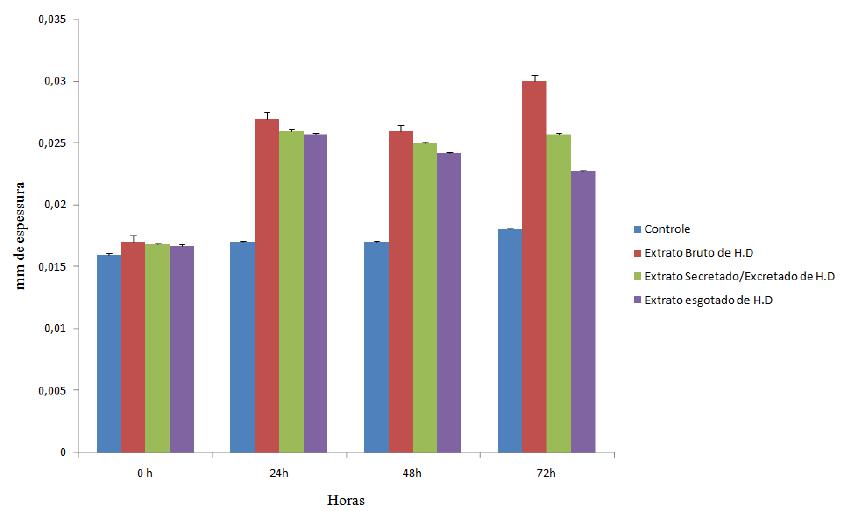ABSTRACT
Anisaquidosis is a disease caused by parasites of Anisakidae family and is characterized by gastrointestinal and allergic reactions. The Anisakis simplex is a more pathogenic Anisakidae to humans and is highly allergenic. However, other species of this family also have characteristics that are harmful to humans, but little is known about the immunogenicity this parasites. The objective of this study was to experimentally assess the immunogenic potential of the parasite Hysterothylacium deardorffoverestreetorum (H.D) in mice. Mice of inbred BALB/c strain were divided into three groups and received three immunizations of the following antigenic preparations obtained from L3 larvae H.D: Crude larval extract of H.D (CEH) Extract secreted / excreted larvae H.D. (ESH) and crude extract of larvae after excretion / secretion (EEH). Serum samples were obtained on different days after immunization to determine the levels of circulating specific antibodies by enzyme-linked immunosorbent assay (ELISA). The results show increased production of immunoglobulin (Ig) G after the second immunization with a gradual increase after the third immunization. Regarding IgE reactivity, this occurred later, demonstrating a progressive increase only after the third immunization. Cellular immunity was evaluated by intradermal, and showed statistically significant result compared to the control used. This experiment is the first description of the pathogenic potential of this parasite in mammals and represents a breakthrough in the diagnosis of human Anisakidosis.
Keywords:
anisakidosis; Hysterothylacium; experimental infection; murine model



